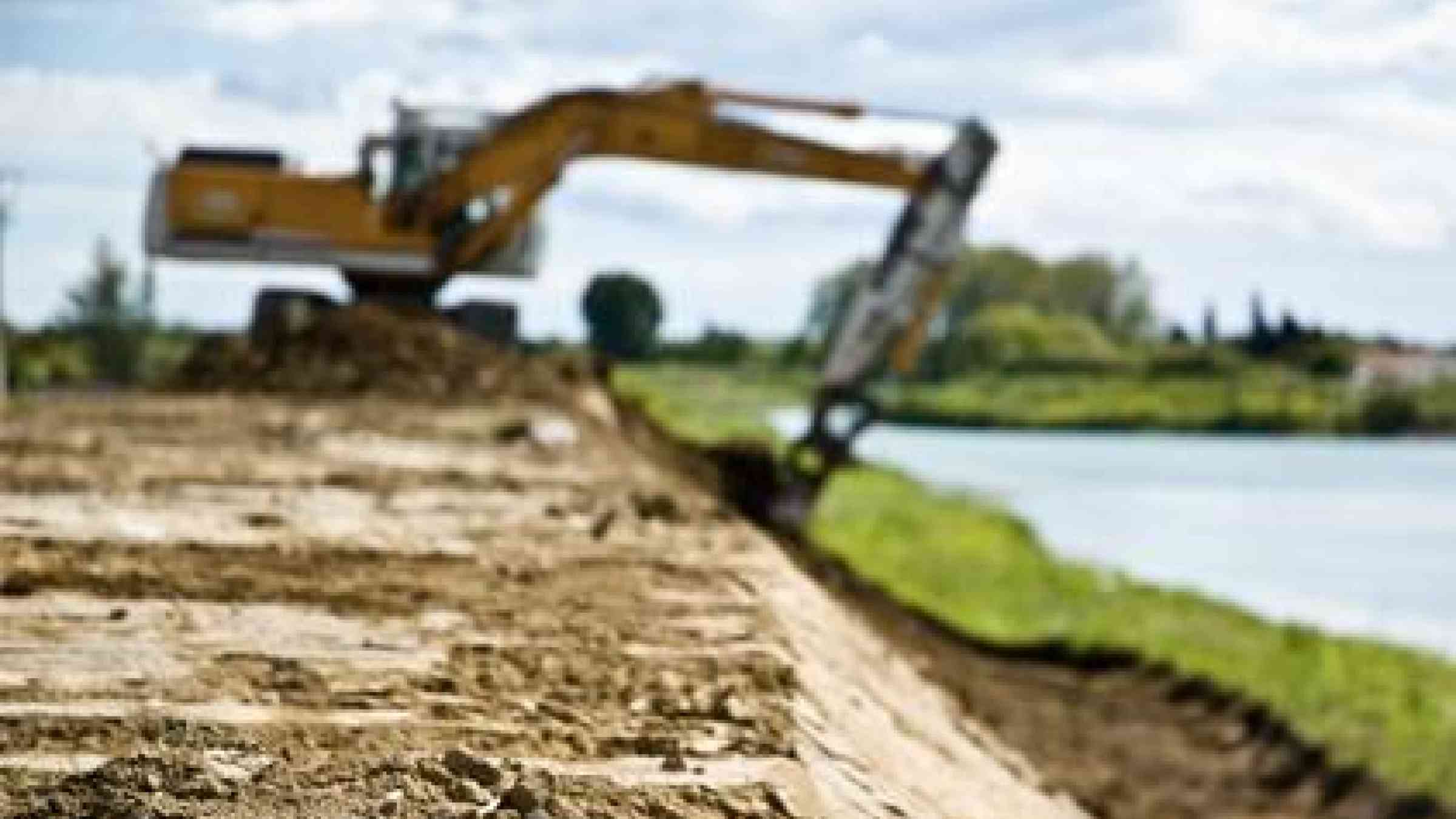Flood crises fuel strategic rethink in Europe

Building a flood-resistant embankment near Montpellier, in the south of France, to hold off rising waters.
GENEVA, 13 January 2015 - Battered by repeated flooding for the best part of a decade, European governments have stepped up efforts to stem the economic and human impact.
France, where communities along the Mediterranean coast where plagued by flash floods in September, October and December 2014, has been at the forefront of the drive to rein in risk.
The French national flood management strategy has three priority objectives: to improve the safety of exposed populations; to stabilize the cost of flood damage in the short term and reduce it in the medium term; to significantly reduce the time required by affected areas to return to normal. The strategy’s time-frame is long term, stretching up to 30 years, with constant assessments of current and future performance to ensure flexibility and head off the creation of new risk.
According to French authorities, the annual average cost of economic losses over the past 30 years has been up to 800 million euros, of which half has been covered by the country’s CAT-NAT natural disaster insurance system. The annual price tag could spiral in the event that meteorological hazards along France’s rivers and coastline grow in frequency and intensity, stoked by climate change.
A nationwide flood risk assessment conducted by France in 2012 showed that almost one inhabitant in four -- and one job in three -- is potentially exposed to water-related hazards. The most vulnerable regions lie along the Mediterranean, in the Alps, in the north and east, as well as in and around Paris.
The country’s shift towards a new national strategy began in 2010, and it has picked up pace since then. By the end of this year, for example, risk management plans are set to be completed for every major river basin, with the authorities working hand-in-hand with a range of stakeholders. Coastal risk prevention plans are also due to be complete by the end of 2015, vulnerability databases by 2016, while 2018 is the deadline for new levee management systems and municipal safeguard plans.
French officials note that vulnerability of populations exposed to flooding hinges on a host of factors, such as the exposure of buildings and strategic locations used for crisis management, the concentration of assets, production modes based on a low-stock, just-in-time approach, and a multiplicity of public and private sector players in charge of services. On top of that, people exposed to floods are unequal in the face of risks, due to varying preventive capacities, or the resources of institutions, all of which can compromise the ability to rebound after the waters subside. Furthermore, focusing too heavily on insurance as the solution can lessen the sense of responsibility for preparedness, while counting too heavily on the power of technology can feed weakness in risk culture.
The most effective prevention when it comes to limiting flood damage remains not building in at-risk zones at all. The French strategy therefore calls for the strict preservation or restoration of floodplains in unconstructed areas, wetlands and dunes along the coastline, and for a general ban on building in areas of extreme vulnerability. The presence of sensitive equipment and installations in flood risk areas is being limited so as to avoid complicating crisis management.
In risk areas where building is deemed possible, all new construction projects are required to be flood-resilient. Another key plank of the strategy is monitoring, early warning and evacuation procedures in areas where a threat to human life is identified, as well as relocation projects if the danger is considered too high. The strategy also states clearly that prevention and mitigation efforts are intended to improve safety, but not to offer a green light for increased urban development in flood-prone areas.
Explore further
Also featured on
Is this page useful?
Yes No Report an issue on this pageThank you. If you have 2 minutes, we would benefit from additional feedback (link opens in a new window).